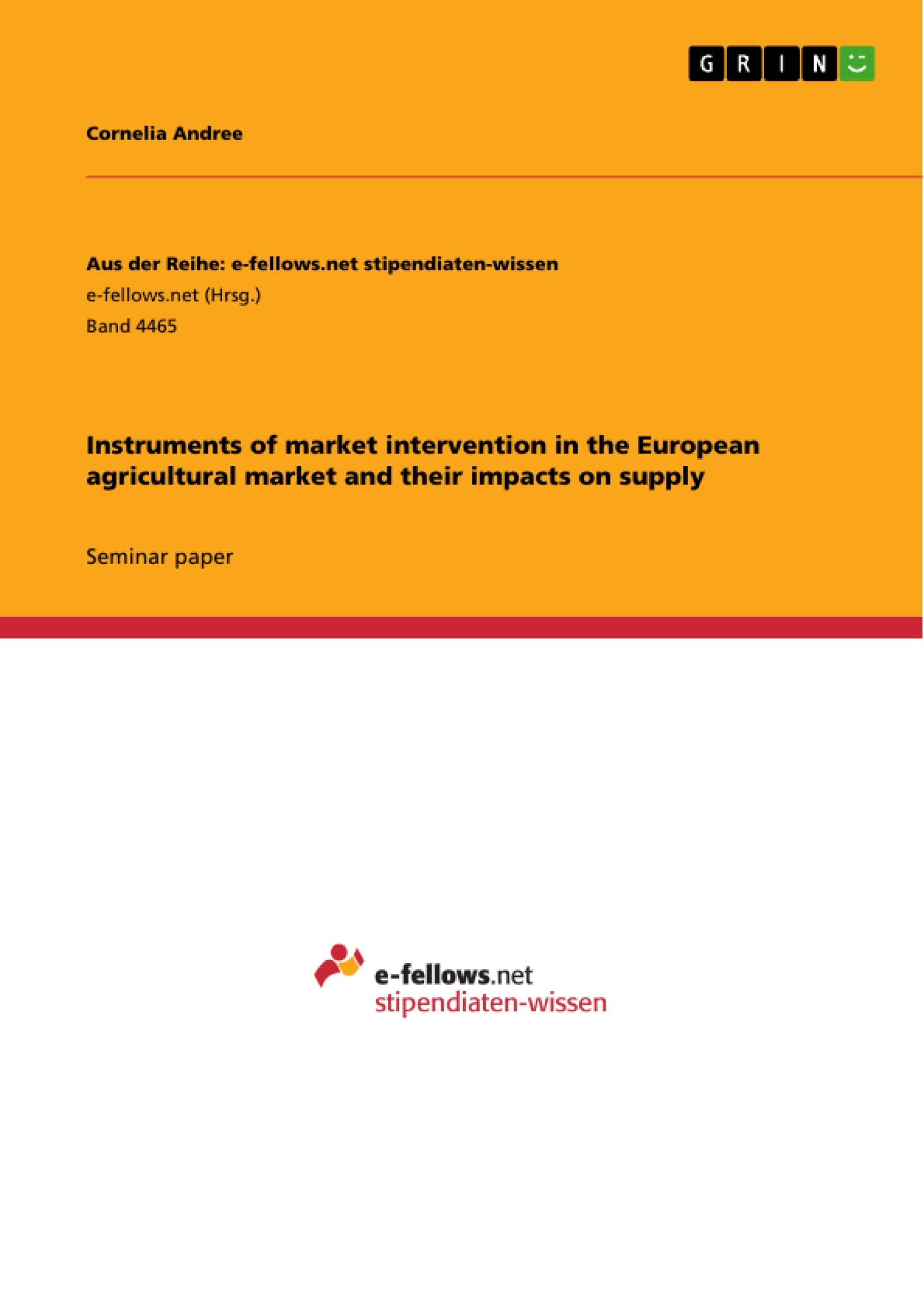With the foundation of the European Economic Community in 1957, which later became the European Union (EU), all member states agreed on an integration of their individual market in a common market which guarantees the free movement of goods, capital, services, and people. Right at the beginning of this process called European Integration, a common agricultural policy which supports, regu-lates and protects the European agricultural market was introduced.
The ancient reason for its establishment was the desolate food supply situation in Europe after the Second World War. As society and economy has been damaged by years of wars, the agriculture had been crippled and nearly all European states were dependant of food imports . In open competition, countrymen suffered huge changes in quantity and prices, which yield to an unsteady and under average in-come as well as an unsecure food supply for consumers . The agrarian market was supposed to failure without governmental intervention . In order to achieve a stable self-supply of affordable food and a better agricultural productivity , the European agriculture was taken out of the regulation system of a free market economy and the common agricultural policy (CAP) came into force 1962.
Inhaltsverzeichnis (Table of Contents)
- Reasons for the common agricultural policy in the EU
- Evolution of the European market intervention
- Post-war-period till 1992: price support, import levy and export subsidy
- 1992 till 2004: coupled direct payments and rural development
- 2004 till 2013: decoupled direct payments
- The GAP after 2013
- Conclusion
Zielsetzung und Themenschwerpunkte (Objectives and Key Themes)
This paper examines the instruments of market intervention used in the European agricultural market and their impact on supply. It traces the evolution of the Common Agricultural Policy (CAP) from its origins in the post-war period to its current state.
- The historical context and reasons behind the establishment of the CAP
- The various instruments of market intervention employed by the CAP, including price support, import levies, export subsidies, and direct payments
- The effects of these interventions on agricultural supply and the overall European agricultural market
- The evolution of the CAP over time, including the shift towards decoupled payments and the ongoing reform process
- The economic and social consequences of the CAP, including its impact on farmers, consumers, and the broader European economy
Zusammenfassung der Kapitel (Chapter Summaries)
The first chapter explores the origins and justifications for the CAP. It highlights the dire food supply situation in Europe after World War II and how the CAP aimed to ensure a stable and affordable food supply for the continent. This chapter lays the groundwork for understanding the subsequent development and evolution of the CAP.
The second chapter provides a detailed account of the evolution of the CAP, encompassing its various stages from the post-war period to the present day. This chapter focuses on the specific instruments employed in each phase, analyzing their impact on the market and highlighting the changes in the policy's approach over time. The chapter outlines the initial emphasis on price support and export subsidies, followed by the introduction of direct payments, and the subsequent shift towards decoupled payments. It also delves into the reform efforts that have shaped the CAP in recent years.
Schlüsselwörter (Keywords)
This paper focuses on the European agricultural market, market intervention, Common Agricultural Policy (CAP), price support, import levies, export subsidies, direct payments, coupled payments, decoupled payments, agricultural supply, European Union, and rural development.
- Quote paper
- Cornelia Andree (Author), 2012, Instruments of market intervention in the European agricultural market and their impacts on supply, Munich, GRIN Verlag, https://www.hausarbeiten.de/document/210027


